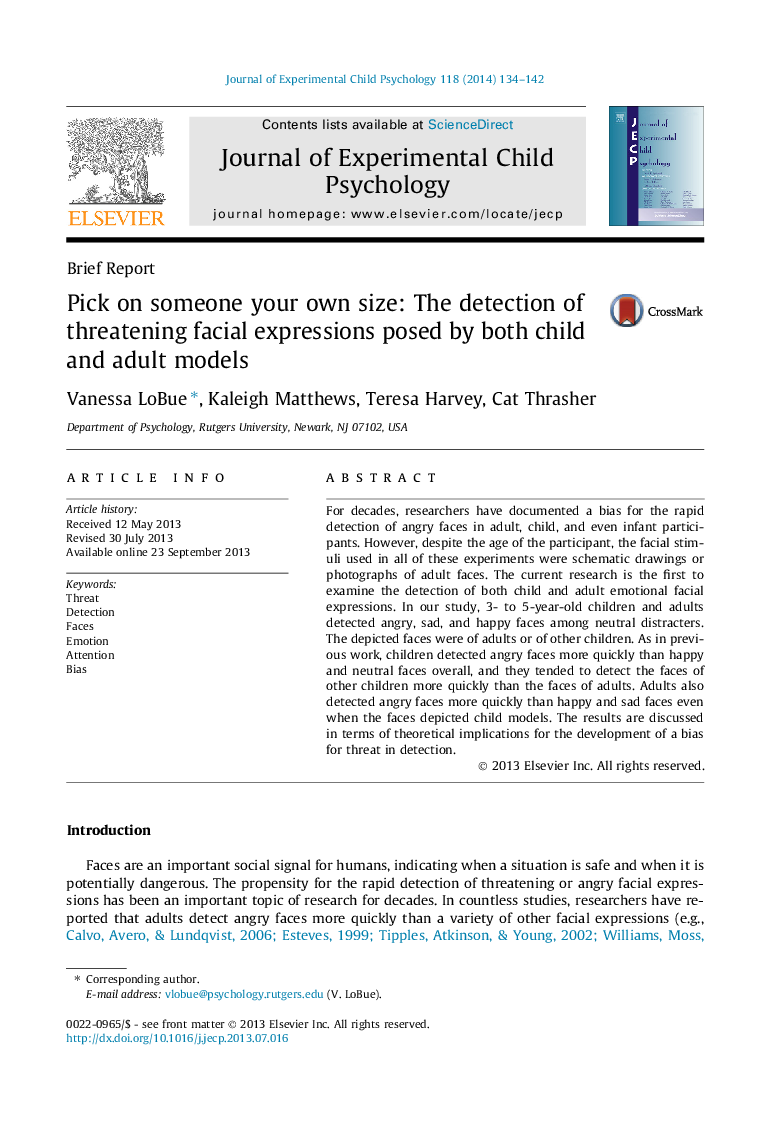| Article ID | Journal | Published Year | Pages | File Type |
|---|---|---|---|---|
| 918106 | Journal of Experimental Child Psychology | 2014 | 9 Pages |
•There is a documented bias for threatening faces in detection.•The current study examines the detection of both child and adult facial expressions.•Both children and adults detected angry child faces more quickly than happy or sad.
For decades, researchers have documented a bias for the rapid detection of angry faces in adult, child, and even infant participants. However, despite the age of the participant, the facial stimuli used in all of these experiments were schematic drawings or photographs of adult faces. The current research is the first to examine the detection of both child and adult emotional facial expressions. In our study, 3- to 5-year-old children and adults detected angry, sad, and happy faces among neutral distracters. The depicted faces were of adults or of other children. As in previous work, children detected angry faces more quickly than happy and neutral faces overall, and they tended to detect the faces of other children more quickly than the faces of adults. Adults also detected angry faces more quickly than happy and sad faces even when the faces depicted child models. The results are discussed in terms of theoretical implications for the development of a bias for threat in detection.
